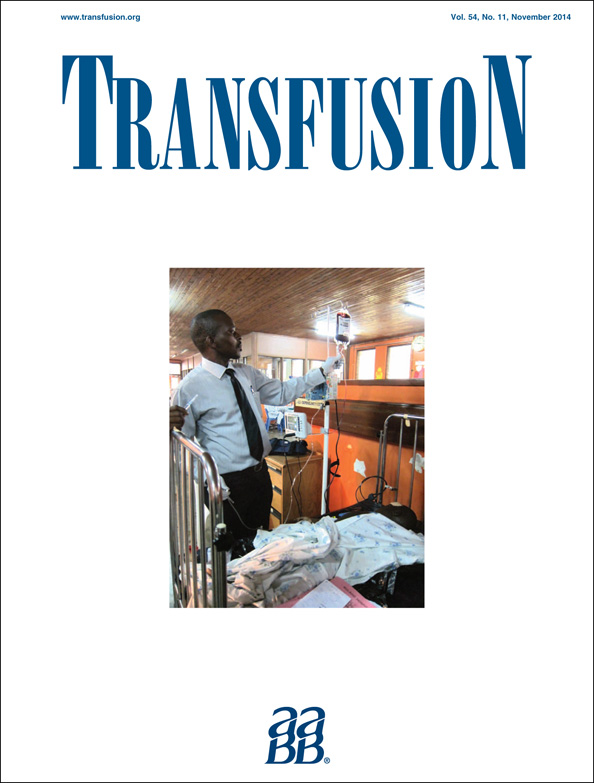Probable transfusion-transmission of Anaplasma phagocytophilum by leukoreduced platelets
Abstract
Background
Anaplasma phagocytophilum (AP), a tick-borne obligate intracellular bacterium, causes human granulocytic anaplasmosis (HGA) and has been implicated in seven transfusion-transmitted (TT)-HGA cases associated with red blood cells (RBCs). Here we report the first probable case of TT-HGA involving leukoreduced platelets (PLTs).
Case Report
A hospitalized male received 25 blood components (November 2012) before his death from trauma. Hospital testing confirmed HGA by peripheral blood smears; samples were also sent to IMUGEN, Inc. (Norwood, MA), for AP-polymerase chain reaction (PCR) and AP-immunoglobulin (Ig)M and IgG enzyme immunoassay. All 12 potentially transmitting donors provided follow-up samples.
Results
Recipient smears progressed from negative to predominantly positive 16 days posttransfusion; hospital-performed AP-PCR was positive on Day 22. IMUGEN sample testing was PCR positive and IgM and IgG negative 14 to 23 days posttransfusion. The recipient had no known AP risk factors. One of 12 donors of RBCs or PLTs (leukoreduced 5-day-old PLTs) provided six follow-up samples; all were strongly IgG positive and IgM negative; one was PCR-positive. The IgG-positive donor was a 52-year-old female from Hudson Valley, New York, an area endemic for AP. She reported tick bites in September to October 2012 with no travel outside New York. The donor remained asymptomatic and received no treatment. The cocomponent PLT unit was transfused to a 78-year-old male who died of causes unrelated to AP.
Conclusions
This eighth case of probable TT-HGA indicates that leukoreduced PLTs may be infectious. An antibody- and PCR-positive donor having prior tick exposure living in an endemic area was identified. PCR positivity and elevated IgG levels, which continue to exceed the assay's detectible range even in the absence of IgM, indicate active donor infection.




